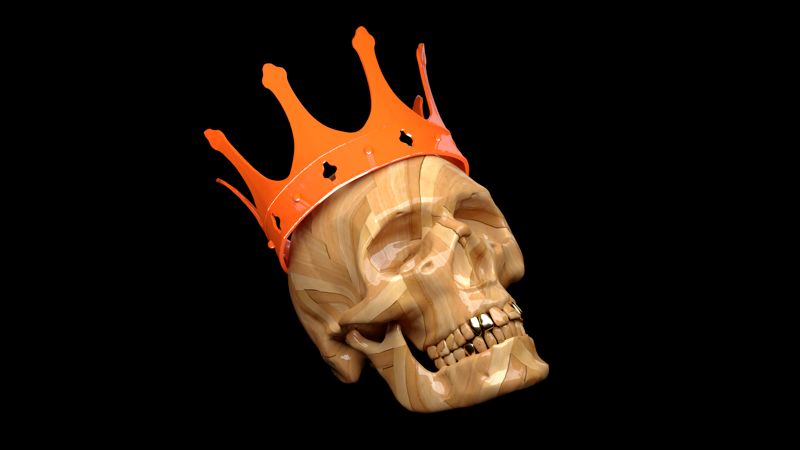From sound to sensory experiences; how 5G will impact advertising
GCRS's Lead Audio Developer, Mirren Malcolm-Neale, and Finance and Technical Director, Ivor Taylor, examine the impact the introduction of 5G will have on what brands and creators can do.
A wave of 5G is about to arrive in the UK, and it will mean a lot of things to a number of different industries. For advertising in particular, there are exciting opportunities.
The introduction of 5G means that AR and VR devices have the potential to become more mainstream and accessible to the public. The technical buzzwords around 5G are ‘bandwidth’ and ‘latency’ or, in non-technical words, loads more data, movies, and gaming and instant responsiveness when you press a button.
Want to watch a catwalk with your body-double wearing the latest fashion placed onto your table all in one augmented reality experience? That’s where 5G can take us.
So far the limited performance of 4G in these two critical areas has been a bottleneck between the smartphone user and their service supplier. 5G knocks down this wall and connects the user’s smartphone seamlessly into the ubiquitous cloud, which is growing and expanding both in size and capability as fast as 5G is starting to be deployed.
Innovative retailers have the opportunity to adopt these technologies to present ever improving immersive retail experiences.
With 5G enabling the seamless delivery of high quality interactive, immersive experiences, innovative retailers have the opportunity to adopt these technologies to present ever improving immersive retail experiences. Want to watch a fashion catwalk with your body-double wearing the latest fashion placed onto your table as you drink your Starbucks coffee all in one augmented reality experience? That’s where 5G can take us.
It is true to say AR and VR headsets and smartphones have to radically improve in performance, usability and cost before this can happen, but nothing in the past 10 years suggests that it won’t. Retailers adopting these technologies will have unique opportunities to bring their products directly into the user’s home.
The world is full of sounds; whether that is real world, or a constructed one, and the developing realm of truly immersive sound enhances and completes the worlds of AR and VR. The importance of associating a specific sound or piece of music with a specific brand is already accepted and with 5G may grow in importance.
For example, here at GCRS, we created the sound design for the original M&S commercials: take ‘It’s not just a chocolate soufflé – it’s an M&S chocolate soufflé’. Here, the luxurious sound of the voiceover took the visuals to another level of opulence. My, (Ivor) student daughter regales me with the fact that she and her university friends cut back during the week so they can splash out on an M&S treat every week. 5G will enable delivery of luxurious brand values, both visual and aural, right at the consumer’s fingertips.
Credits
View on- Agency Grey/London
- Production Company Sonny London
- Director Guy Manwaring
-
-
Unlock full credits and more with a shots membership
Credits
View on- Agency Grey/London
- Production Company Sonny London
- Director Guy Manwaring
- Editor Mark Edinoff
- Director Charlie Stebbings
Explore full credits, grab hi-res stills and more on shots Vault

Credits
powered by- Agency Grey/London
- Production Company Sonny London
- Director Guy Manwaring
- Editor Mark Edinoff
- Director Charlie Stebbings
Above: M&S's recent commercial, using the famous 'this is not just...' line from previous campaigns.
5G doesn’t stop there. Say you are walking around the latest experiential retail shop. You stop to look at a display of trainers. The display identifies you and knows your, age, sex, spending profile and hobbies. Your smartphone and trainer display exchange data and between them build a custom overlay on your data linked AR glasses. You see an optimised presentation of the trainers best suited to you and your activity profile, the pricing and sales opportunity is seamlessly bid for by the trainer companies and then you see the pricing overlaid onto the trainers via your AR glasses.
On top of that, each product or brand could have its own ‘sting’. The visuals, soundtrack, selling proposition, brand positioning and targeting all customised to you, and the instant you are looking at the trainers.
When data budgets are tight, sound for immersive experiences is often the first thing to be scaled back.
Immersive experiences are increasingly leaning towards combining both VR and AR; a mixed reality experience. However, currently both VR and AR as standalone entities are power and processing intensive, so running them concurrently limits what you can do with previously available networks. 5G’s vastly increased bandwidth and reduced latency will allow the easier combination of VR and AR into one experience. It will be much smoother, allowing for more freedom in creativity and a much richer encounter.

Above: GCRS's Mirren Malcolm-Neale and Ivor Taylor.
Using data from within an immersive experience to take real-time control of external components is already being done, but there is always a concern for latency.
For sound this is critical.
With the introduction of 5G these limitations can be alleviated, allowing room for far more complex soundscapes and sound narrative.
For example, say you were using someone’s hand gesture to trigger a sound from an external speaker somewhere else in the room. If the data being sent to the speaker is too slow the immersion is instantaneously lost. Moreover, incorporating these kinds of interactions takes up processing, and there would be a limit on how many of these ideas could be included. 5G’s reduced latency will enable these interactions to be perceived as instant, and therefore uphold the immersion, as well as providing scope to include a multitude of these types of interactions.
When data budgets are tight, sound for immersive experiences is often the first thing to be scaled back, and also given the least amount of computational processing or memory. With the introduction of 5G these limitations can be alleviated, allowing room for far more complex soundscapes and sound narrative, again allowing a greater amount of freedom for creativity and a richer experience and without the need to ever compromise on the quality or creativity of sound.
With 5G there is more scope to run VR, AR, AI and machine learning ideas all in one immersive experience.
Initially, although the bandwidth is far superior, the coverage will not be. Nevertheless it is really just a matter of time until it catches up and this drawback does not really seem to be stopping anyone. Alongside 5G, great strides are being taken in the world of artificial intelligence and machine learning. As has been mentioned, the sheer amount of processing that needs to be done when sending data in VR and AR experiences is the main limitation of the creative. With 5G there is more scope to run VR, AR, AI and machine learning ideas all in one immersive experience, pushing creativity and technology to a new level.

This is all great, but let’s talk about the dark side of telecoms data and how politics and the drive for ever greater profitability may compromise 5G’s future from our perspective.
4G can be very fast. In Manhattan, one service provider demonstrated speeds of 500mbits/s using 4G. The reason users don’t see these speeds is that each user’s data rate is capped, such that the service providers limited bandwidth can be shared across as many users as can be crammed in. The greater number of users, the more money the service provider can make from their available bandwidth. The more users the less bandwidth for each user.
When 5G is fully deployed and matured as a technology the enhancements to connectivity it will bring will be revolutionary.
Adding to the ‘users’ is the exponential growth of The Internet of Things. The large part of these IOT devices will be on hardwired wi-fi access points, but in many places those wires either don’t exist or aren’t very reliable. 5G will step in and fill these voids and this will impact the deliverability of the 5G dream.
Despite these negatives, when 5G is fully deployed and matured as a technology the enhancements to connectivity it will bring will be revolutionary.
Get connected.
)







